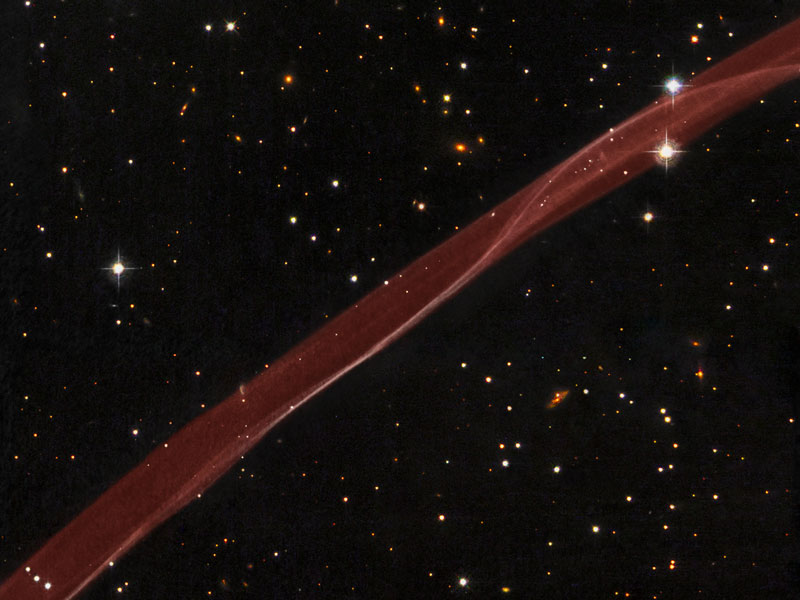SN 1006: A Supernova Ribbon from Hubble

Explanation:
What created this unusual space ribbon?
Most assuredly, one of the most
violent explosions
ever witnessed by ancient humans.
Back in the year 1006 AD, light reached Earth from a stellar explosion in the
constellation of the Wolf
(
Lupus),
creating a "guest star" in the sky that appeared
brighter than Venus and lasted for over two years.
The supernova, now cataloged at
SN 1006,
occurred about 7,000 light years away and has left a large remnant that continues
to expand and fade today.
Pictured above is a small part of that
expanding supernova
remnant dominated by a
thin and outwardly moving
shock front that heats and ionizes
surrounding ambient gas.
SN 1006 now has a diameter of nearly 60
light years.
Within the past year, an
even
more powerful explosion
occurred far across the universe that was visible to modern humans,
without any optical aide, for a few seconds.
Note: Free
Astronomy Course Taught Online by an APOD Editor
Authors & editors:
Robert Nemiroff
(MTU) &
Jerry Bonnell
(USRA)
NASA Web Site Statements, Warnings,
and Disclaimers
NASA Official: Jay Norris.
Specific
rights apply.
A service of:
LHEA at
NASA /
GSFC
& Michigan Tech. U.

